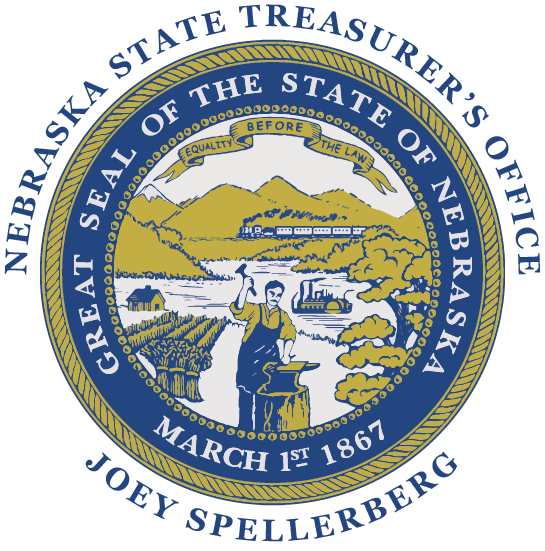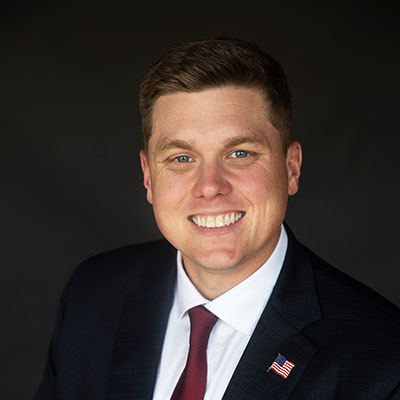Good Morning!
Welcome to the fifth issue of our Nebraska State Treasurer’s Office electronic newsletter.
The Memorial Day fire that destroyed the Lincoln Public Schools Administration Building, resulting in $20 million in damages, has caused public agencies, including the Nebraska State Treasurer’s Office, to review disaster contingency plans, particularly regardingvaluable data storage.
In the case of LPS, the data center was housed in the building that was destroyed in the fire, and backup files were stored at North Star High School. According to the Lincoln Journal Star, however, since many of the servers used to process that data were at the district office, it took time “to get many of the district operations up and running.”
Now, LPS is looking at a new off-site data center, making it possible for computer systems to be returned to service more quickly after a disaster.
At the State Treasurer’s Office, contingency plans are on our mind as well. The Treasurer’s Office Information Technology staff has a good plan in place for data storage and retrieval in the event of a fire, flood, tornado, or terrorist event. An off-site business continuity center at Whitehall Mansion in northeast Lincoln provides space for backup servers in a room controlled for temperature, humidity, and light. The center also includes 12 workstations equipped with computer monitors, telephones, FAX machines, scanners, printers, and calculators.
Doors are secured with magnetic locks and alarm systems and are fire rated. Access is limited. “We are very security conscious,” explained Charles Luginbill, IT director. Luginbill said the Treasurer’s Office “is very well positioned” to continue the essential functions of the office in a disaster. “The Treasurer’s Office has the technology in place to continue doing business. We have a plan that is a living document, that is constantly updated,” he said. Char Scott, accounting and banking director at the Child Support Payment Center, is the plan manager.
Of special interest to Luginbill is the fact that the Treasurer’s business continuity center, with its high-tech equipment, is located on 900 square feet on two floors of a Classical Revival- style house built more than 100 years ago, which has been converted and secured for modern-day use. The 18-room mansion, built by Olive White in 1910 and now owned by the state, is listed on the National Register of Historic Places.
"If any of our primary sites downtown were to become compromised in any way and our staff were unable to physically access any of these locations, they could head to our Business Continuity and Disaster Recovery site and be able to perform all of their same job duties, tasks, and responsibilities as they normally would within only a few hours." said Jason Crisp, IT infrastructure support analyst. Matt Scheinost, business system analyst, said staff members periodically visit the center to practice and verify that they could be back up and fully functioning in an emergency.
Both our Treasury Management Division and our Child Support Payment Center perform significant daily financial transactions that are required by state and federal laws and contracts to go on both in quiet, calm times as well as in times of chaos, loss, and disaster. Even in a disaster, the state’s banking business must continue and families depend on child-support payments to provide for their children.
The computer servers at Whitehall provide backup for servers at the Child Support Payment Center at 233 S. 10th St. and at the main Treasurer’s suite in the Capitol. A server, our IT staff explains, is basically a big computer with a bigger-than-usual processor and memory that “serves up service” to workstations on the network. The Treasurer’s Office maintains 100 permanent workstations and 15 portable laptop stations in three locations.
The servers and computers at the business continuity center are constantly monitored and updated by IT staff members and can be fully functioning in four to twelve hours. Once the business continuity center is fully functioning, organizers would begin developing a disaster recovery site for a more long-term operation, allowing the office to run business as close to normal as possible. Check out The Whitehall Photo Gallery at www.treasurer.org/albums/whitehall/ for more pictures and historical information.
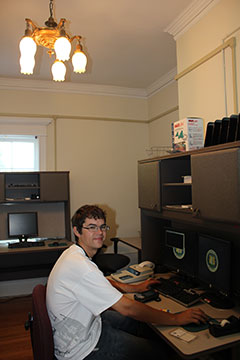
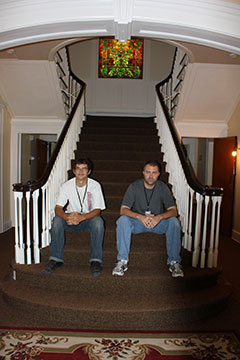
In addition to ongoing planning for unpredictable events, here’s what the Treasurer’s Office has been up to lately. Below are highlights of the latest announcements involving the office:
- September 13, 2011
- Lincoln, NE
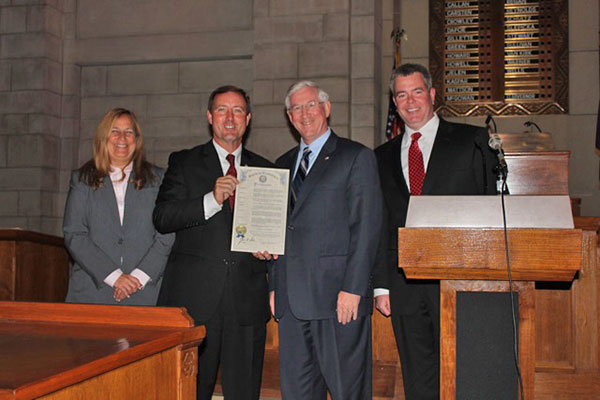
Lt. Gov. Rick Sheehy today proclaimed September as College Savings Month in Nebraska. On hand for the proclamation were State Treasurer Don Stenberg, Trustee of the Nebraska Educational Savings Plan Trust; Deborah Goodkin, Managing Director of College Savings Plans for First National Bank of Omaha; and Eric Hoiekvam, Operations Manager for College Savings Plans for First National Bank of Omaha.
The proclamation ceremony took place in the Warner Chamber of the State Capitol.
“Our children and our state deserve the brightest futures possible. Saving early for college is one way parents, grandparents, and friends can help young people reach their potential and live their dreams. A well educated workforce is also one way to help Nebraska achieve its potential and meet the challenging demands of the future,” said State Treasurer Stenberg.
Click here to read full article and to listen to the Treasurer’s announcement.- September 7, 2011
- Lincoln, NE
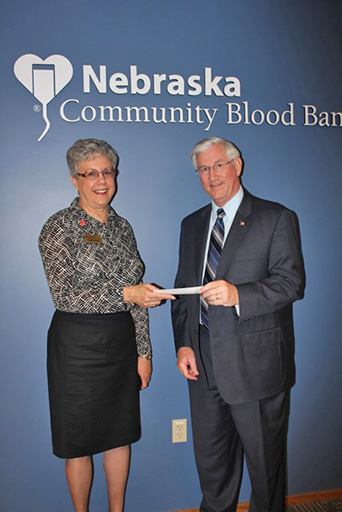
State Treasurer Don Stenberg delivered a check for $9,136 today to the Nebraska Community Blood Bank for unclaimed property that had been turned over to the state. The unclaimed property was shares of stocks and dividends.
What’s more, he gave a personal gift, as well. He became a blood donor, rolling up his sleeves to donate his blood to the Nebraska Community Blood Bank.
Click here to read full article and to listen to the Treasurer’s announcement.- May 11, 2011
- Lincoln, NE
Twelve winners have been chosen out of a record 1,051 entries in the 2011 College Savings Program essay contest sponsored by the Nebraska State Treasurer’s Office and the Omaha Storm Chasers baseball team.
Seventh and eighth grade students from Nebraska and across the United States were invited to submit essays addressing the theme, “Why I Want to Go to College.” The essays were judged by faculty and students in the College of Education at the University of Nebraska at Omaha with final selections made by State Treasurer Don Stenberg.
Click here to read full article.- May 3, 2011
- Lincoln, NE
Nebraska State Treasurer Don Stenberg has signed on to an agreement to recover for Nebraskans approximately $1 million in unclaimed insurance proceeds currently held by insurer John Hancock.
“This agreement reflects our continuing commitment to recover unclaimed property and return it to the Nebraskans to whom it rightfully belongs,” Stenberg said.
The agreement grew out of an audit of John Hancock by Nebraska and 34 other states and the District of Columbia.
Click here to read full article.- May 2, 2011
- Lincoln, NE
Seminars for employers making child support payments on behalf of their employees will be offered across Nebraska from May through October by the Nebraska Child Support Payment Center, a division of the State Treasurer’s Office, State Treasurer Don Stenberg announced today.
“We emphasize the use of electronic payments by the employers. This eliminates printing and handling paper checks and postal costs. It is also a savings to the Nebraska taxpayers,” Stenberg said.
Human resource managers and payroll managers of Nebraska businesses are invited to attend the seminars to learn about changes in laws and practices relating to the withholding of court-ordered child support payments for employees. The seminars are designed for payroll managers, as well as business owners, accountants, controllers, and bookkeepers.
Click here to read full article.- April 28, 2011
- Lincoln, NE
The innovative use of prepaid debit cards by the Nebraska Child Support Payment Center, a division of the Nebraska State Treasurer’s Office, was highlighted in Washington, D.C., this week at a panel discussion hosted by the Hudson Institute, a nonpartisan policy research organization.
“Using technology to reduce costs to the taxpayer continues to be a high priority for all of the divisions of the State Treasurer’s Office. We are proud of the national recognition we received for these efforts,” State Treasurer Don Stenberg said. “The prepaid cards have been an excellent way to cut state program expenses and streamline government operations while still delivering services to constituents,” he said.
“If the federal government is going somewhere with trying to get people who get paper checks to move to other payment modalities, Nebraska is already there,” said Hanns Kuttner, the Hudson Institute’s visiting fellow.
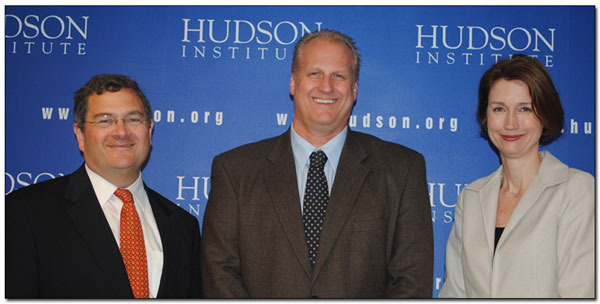
- Jana Langemach
- Director of Communications
- 531-207-3094
